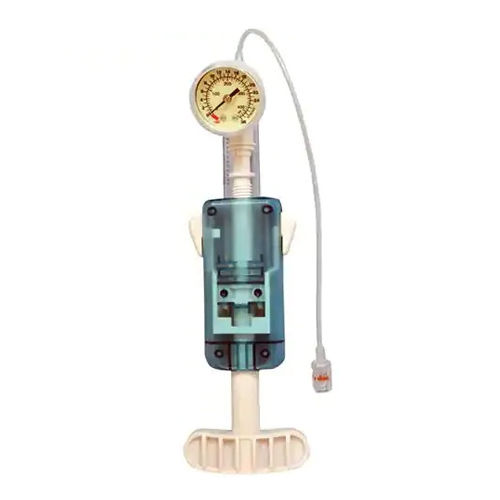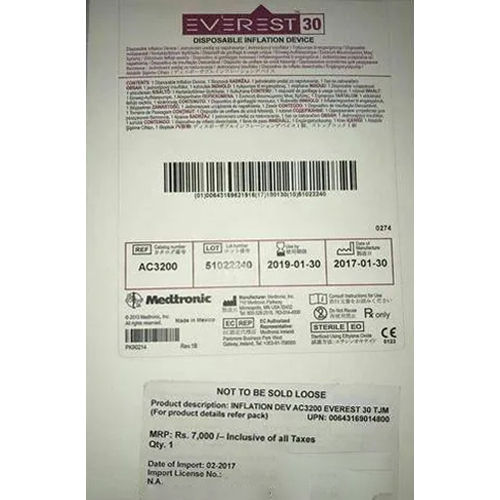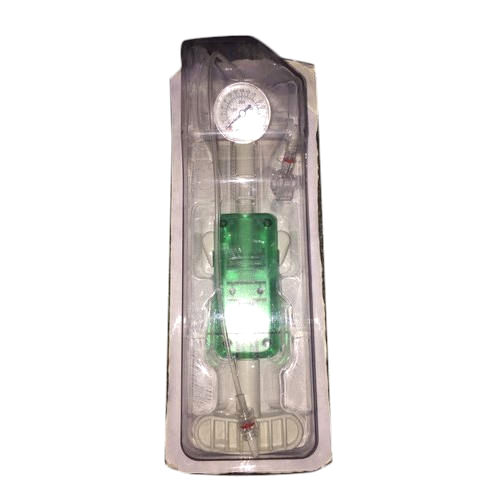Abbott Inflation Device Copilot 2030 Priority Pack
Product Details:
- Material Plastic
- Condition New
- Sterilized Yes
- Usage Hospital
- Power Source Electric
- Click to View more
Abbott Inflation Device Copilot 2030 Priority Pack Price And Quantity
- 2780 INR/Piece
- 50 Piece
Abbott Inflation Device Copilot 2030 Priority Pack Product Specifications
- New
- Hospital
- Yes
- Plastic
- Electric
Abbott Inflation Device Copilot 2030 Priority Pack Trade Information
- 10000 Piece Per Week
- 4 Days
Product Description
Abbott Plastic Inflation Device monitors and creates pressure during vascular procedures. It has an analogue pressure gauge which registers pressure. It contains a quick-release mechanism that quickly engages and disengages the threads on the plunger handle. Abbott Plastic Inflation Device is used to inflate balloons during the angioplasty procedure. It consists of a dedicated plunger mechanism that monitors pressure within the balloon and a connecting tube.
Product details
|
Packaging Type |
BOX |
|
Model Name/Number |
Copilot 2030 Priority Pack |
|
Material |
Plastic |
|
Usage/Application |
Hospital |
|
Brand |
ABBOTT |
Frequently Asked Questions
Q: The Abbott Plastic Inflation Device: What is it?
A: During various interventional procedures, balloon catheters are inflated and deflated using the Abbott Plastic Inflation Device. In the discipline of interventional cardiology, it is frequently employed.
Q: The Abbott Plastic Inflation Device operates in what way?
A: A plastic body with a plunger and a syringe-like mechanism make up the gadget. It is made to give balloon catheters controlled inflation and deflation. The fluid, usually saline solution, is pushed or pulled into or out of the balloon using the plunger to inflate or deflate it.
Q: What distinguishing qualities does the Abbott Plastic Inflation Device have?
A: The device often has a translucent plastic body that enables the user to see the flow of the fluid during inflation and deflation. It could also have indications to show how much fluid is being injected. For quick attachment to the balloon catheter, the device frequently features a luer lock or luer slip connector.
Q: The Abbott Plastic Inflation Device is a reusable or disposable product?
A: Typically, the Abbott Plastic Inflation Device is a disposable item. To reduce the chance of cross-contamination and maintain patient safety, it is single-use only. It should be discarded after use in accordance with the relevant medical waste disposal rules.
Q: Is there a balloon catheter that the Abbott Plastic Inflation Device wont work with?
A: A wide variety of balloon catheters used in interventional treatments are compatible with the Abbott Plastic Inflation Device. To guarantee optimal compatibility and usage, it is crucial to adhere to the manufacturer's recommendations.






